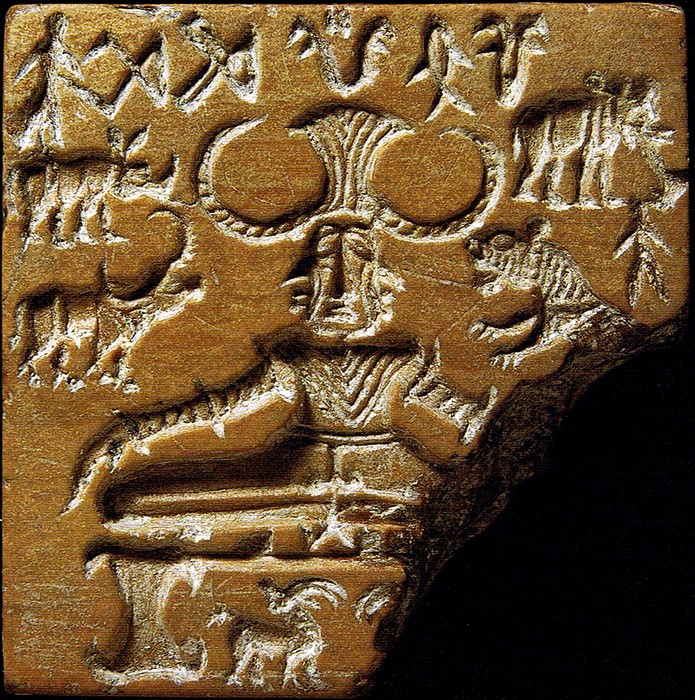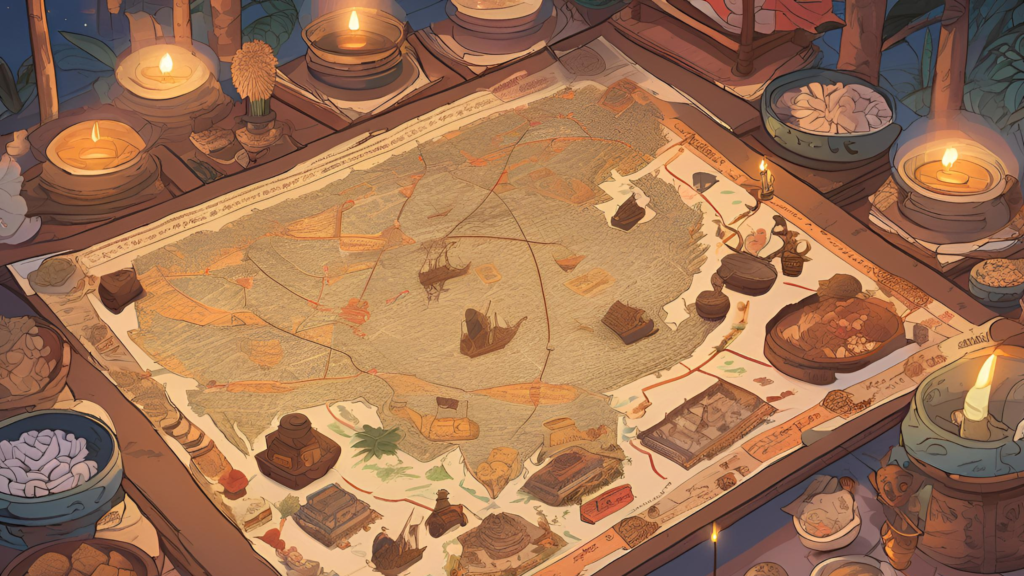Marketing has been around for ages and is not a recent development. Trade was vital to India’s economic development and traders used innovative tactics to draw in customers. Ancient Indian traders were pioneers in marketing strategies that are still relevant today.
Let’s begin to see what was happening in the world of ancient Indian marketing!
1. The Power of First Impressions: Branding in Mohenjo-Daro and Harappa
The traders of Mohenjo-Daro and Harappa in the remarkable cities of the Indus Valley Civilization (2600–1900 BCE), grasped a crucial concept that many modern businesses find challenging—branding fosters trust. Distinctive symbols were used on seals, small stone or clay tablets, to mark their goods. These served as initial trademarks, guaranteeing authenticity and thwarting counterfeiting efforts.

Lesson: Your brand identity matters.
Much like modern companies utilize logos and packaging to convey quality—consider Apple’s sleek design or Coca-Cola’s iconic red and white palette—ancient traders employed symbols to build trust and credibility. A compelling brand image can distinguish you in a saturated marketplace.
2. Location, Location, Location: The Art of Strategic Selling
Ancient Indian traders were selective about their locations for setting up shop. They strategically placed themselves at busy crossroads, temple entrances, and vibrant market squares—prime locations where potential customers were already gathered.
Lesson: Placement drives sales.
Modern retail follows the same principle. Brands fight for prime locations in malls like near escalators and in high-footfall areas to increase visibility. Online, this translates to ranking high on Google search results or securing ad placements on popular websites.
3. Influencer Marketing, 2000 BCE Edition
Prior to influencers on social media, royalty was the ultimate trend-setter. The demand for a certain linen, jewel, or smell increased dramatically if a monarch wore it.
- Because of the Nizams’ passion for pearls, Hyderabad became a major hub for the world’s pearl trade.
- Persian carpets became a prestige symbol in India thanks to the patronage of the Mughal rulers.
Lesson: People follow authority figures.
Much like how celebrity endorsements propel sales in today’s market—consider Virat Kohli for Puma or Deepika Padukone for Levi’s—ancient traders harnessed the power of royal endorsements to influence consumer choices.
4. Storytelling Sells: Word-of-Mouth & Viral Marketing
Folktales, travelers, and poets were used by merchants to promote their goods long before television commercials and social media. Whether it was spices cultivated on holy soils or silk from the ethereal realms of Kanchipuram, traders made sure their wares had intriguing backstories.
Lesson: Make your product memorable with a story.
Today’s top businesses such as Tesla (which is transforming transportation) and Nike (which inspires athletic greatness), employ storytelling to connect emotionally with its customers. People discuss and remember interesting tales.
5. Psychological Pricing: The Original Sales Tactic
The psychology of pricing was mastered by ancient Indian traders. They engaged in haggling rather than presenting set prices, which allowed customers to feel in charge of the deal. This is comparable to contemporary premium pricing, discounts, and time-limited promotions.
Lesson: Perceived value matters.
Customers rely their purchases on perceived value rather than just price. Because of this luxury businesses charge more for exclusivity, and e-commerce sites use “deal of the day” strategies to create a sense of urgency.
6. The First CSR Initiatives: Giving Back to Build Reputation
Ancient Indian traders often donated gold, built temples, and supported education, ensuring their names were inscribed on temple walls. This wasn’t just generosity—it was strategic. It built goodwill and positioned them as trusted community figures.
Lesson: Social responsibility builds brand loyalty.
Today’s top companies follow the same model. TATA funds hospitals, Infosys supports education, and Patanjali promotes Indian agriculture. Consumers are more likely to support brands that contribute to society.
7. Slogans & Jingles: The Birth of Catchy Marketing
Indian street vendors used rhythmic slogans to attract customers, much like today’s advertising jingles. The goal was simple—make the product unforgettable.
- Ancient vendors: “Fresh mangoes, juicy and sweet—taste them once, you’ll never leave!”
- Modern ads: “Washing powder Nirma” or “Vicks ki goli lo, khich khich dur karo.”
Lesson: Repetition = Brand Recall.
The more often people hear your brand message the more likely they are to remember and trust it. That’s why jingles, taglines and consistent brand messaging are essential.
8. Global Trade & The Art of Positioning: India’s Silk Route Influence

Indian merchants weren’t just sellers; they were global marketers. The Silk Route helped them expand their reach to Persia, China, and Europe. Indian products like spices, muslin and gemstones were positioned as luxury items
You’re wrong to think that luxury branding is a new idea. It’s interesting to look at how smart ancient Indians were at selling things like the Muslin of Dhaka, a very thin fabric that was known as “woven air.”
Some of the most valuable diamonds in the world, like the legendary Koh-i-Noor, were found in the famous Golconda mines, which are now in Telangana. Royals all over the world, from Mughal rulers to British monarchs, used these gems as status symbols.
Spices like saffron, cardamom and black pepper were not only used in cooking, they were also signs of wealth. Indian spices were so valuable to the rich people in Europe that they were called “black gold” and even used as money.
Lesson: Position your product strategically.
If your brand is exclusive, market it as a premium offering (like Rolex). If it’s for the masses, focus on affordability and accessibility (like Amazon and Flipkart). The way you position your brand determines its perceived value.
9. Customization: The Original Personalization Strategy
Ancient Indian traders knew that different markets had different tastes. They customized silk colors for Persian buyers, tailored jewelry styles for Chinese traders and adjusted spice blends for European merchants.
Lesson: One-size-fits-all doesn’t work.
Amazon suggests products based on browsing history, and Netflix recommends shows or movies based on previous viewing. These days, businesses personalize their offerings.
10. Town Criers: India’s First Mass Advertisers
Before newspapers and billboards, town criers announced sales, new arrivals, and festival discounts in public squares. They used strategic messaging, repetition, and emotional appeal—just like today’s TV and radio ads.
Some examples are,
- Festivals and Religious Gatherings: “Hear ye, hear ye The grand Dussehra festival is upon us! Come witness the glorious victory of Lord Rama!”
- Political Announcements: “By order of the mighty Emperor Ashoka, let it be known peace and prosperity shall reign!”
- Trade Alerts: “Traders from Persia have arrived with the finest silk and exotic spices—hurry before the stock runs out!”
Lesson: Clear, compelling messaging wins.
The best marketing campaigns today follow the same formula—keep it clear, repeat the key points, and connect emotionally with the audience.
Conclusion: The Relevance of Ancient Indian Marketing
Ancient Indian traders were marketing geniuses. They understood branding, psychology, storytelling and customer engagement long before modern advertising existed. Their strategies weren’t just effective—they were timeless.
Next time you see a viral campaign, influencer endorsement or premium product positioning, remember—these aren’t new ideas. They’ve been shaping human behavior for thousands of years.
So, if you’re looking for marketing inspiration look no further than India’s rich commercial history. The past holds the secrets to future success!
Ref:
https://ehandbook.com/3-lessons-from-ancient-india-to-make-you-a-more-successful-entrepreneur-ed627b176b09
https://www.linkedin.com/pulse/unearthing-wisdom-timeless-lessons-from-ancient/
Like this post? 📩 Get the next marketing story straight to your inbox as soon as it drops! Sign up now and never miss out on the fun.


1 Comment